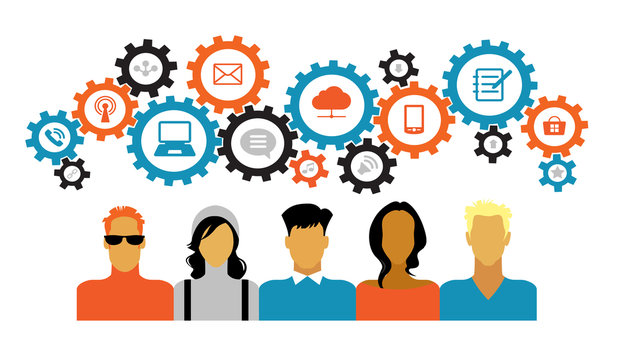CEM Top Ten #9: Think Mobile to Be Mobile Relevant
Blog: The Tibco Blog
After a decade of growth in users, capabilities, and behavioral adoption, we’re certainly ready to be “mobile first.” The key insight is to utilize mobile in ways that leverage mobile’s strengths and minimizes the few, but meaningful, weaknesses.
Let’s lay out some facts:
- Mobile may not be “first”—TV still rules as the dominant screen in our lives—but has surpassed desktop and laptop with respect to web usage and time on device (WSJ and comScore)
- 20% of 18-34 year olds don’t even use desktops or laptops any longer (comScore)
- Mobile remains dominantly an app appliance—90% of all time on mobile is app-based versus browser-based (Flurry Analytics)
- Ecommerce conversion rates are roughly 3X when initiated on a desktop or laptop browser versus a mobile phone-sized screen device (Monetate)
The simple conclusion is that for many use cases of digital engagement, mobile passed larger browser-based formats last year and there is no looking back. While the process of shopping—research, evaluation, review gathering, selection, and check-out—still biases towards desktop and laptop, many of the other ways brands can effectively serve their customers should now be led with a mobile-first mindset.
Unfortunately, too many mobile developers and the business leaders who drive design, experience, and functionality deliver experiences and functionality that too often do not meet expectations and lead to abandonment after a single use.
A simple key to success is to keep focused on what makes a smart mobile device so great. Mobile engagement must leverage why we can’t be without our phones. It should not try to replace touchpoints that work better elsewhere (for instance: a personable and well-trained sales associate), require keyboarding that mobile phones make irritating, or underwhelm images that look bigger, bolder, and more compelling on larger screens.
About five years ago—well before the proliferation of productive apps—we were working with one of the world’s top fashion retailers focused on 16-28 demographic, and someone intelligently said, “When we think about the app, let’s make sure that it really uses what’s in the phone.” It was an off-hand comment, but it has stuck with me for years. Examples of effective customer engagement and specific smart mobile capabilities:
Geo-Location: Increasingly utilized feature of relevant (and unfortunately, too often intrusive) customer engagement. Couponers like RetailMeNot are now welcoming their top shoppers and reminding them of their current offers, ski areas such as Vail Resorts are tracking distance skied and runs taken, and retailers like The North Face are capturing outdoor activity as part of their loyalty programs.
Cameras: This provides consumers the ability to capture and either share back to companies or with their friends (directly or via social media). A number of great promotions have engaged consumer enjoying tacos, pizza, cookies etc. and others like Red Bull use OCR via members’ cameras to log cans purchased. Banks have removed friction by allowing their customers to photograph checks for deposit.
Music: A number of brands reward or engage their customers with music that seamlessly meshes with their existing collections. Starbucks is an excellent example of connecting their app directly to the iTunes store. Red Bull rewards loyal customers with direct downloads from their associated artists.
Games: Nearly two thirds of all gaming time is spent on mobile phones. Brands that are using game mechanics, or gamification, to engage with their customers find that mobile platforms give them a significant boost in frequency and duration of play. McDonald’s popular Monopoly game went from paper and stickers to browser and then quickly to mobile. Chipotle is attempting to follow and use mobile gaming to reestablish trust with their customers.
Wallet: Mobile phones are increasingly replacing our old leather wallets. Moving credit cards, movie tickets, frequent shopper cards, and boarding passes makes buying, holding, and using all of these previously physical items safer, easier, and more efficient.
Notifications: If done with relevancy, notifications can provide meaningful information, at the most opportune time, to the right consumer. If we don’t hear the beep, we feel the vibration and many of us are Pavlovian in our reaction. Caution: relevance is so important to maintaining trust. Amazon is among the best at this.
Phone (!): Yes, mobile phone are phones. Sometimes we forget that many people actually use smart mobile devices to talk to people. For many customer inquiries, when we search for restaurants or when we want to air our grievances, we begin with a search for information and a phone number. Click to call allows us to immediately connect with a human being. Interestingly, call volumes are actually creeping up as browser behavior shifts moderately to mobile. New technologies are doing a much better job capturing pre-call browser data and sending that information along with the call so that representatives have additional context for resolving issues.
Finally, mobile can not be developed in isolation from other channels. It’s very best effectiveness is when there is a seamless integration with other digital touchpoints: laptop/desktop browsers (Google Maps), TVs (Netflix and Amazon), wearables (Fitbit), and now cars.
The bottom line is to be more effective with mobile engagement and play on the device itself. Remind yourself why you check your smartphone between 50 and 100 times each day and carry it everywhere you go, and translate that to effective, relevant, and meaningful engagement.
To catch up on the first eight posts in the Customer Experience Marketing Top Ten series by David Rosen, click here. Check out how other companies and leaders began their journeys and got on the road to digital business at TIBCO NOW last month by watching the enthralling keynote presentations here.
Leave a Comment
You must be logged in to post a comment.








